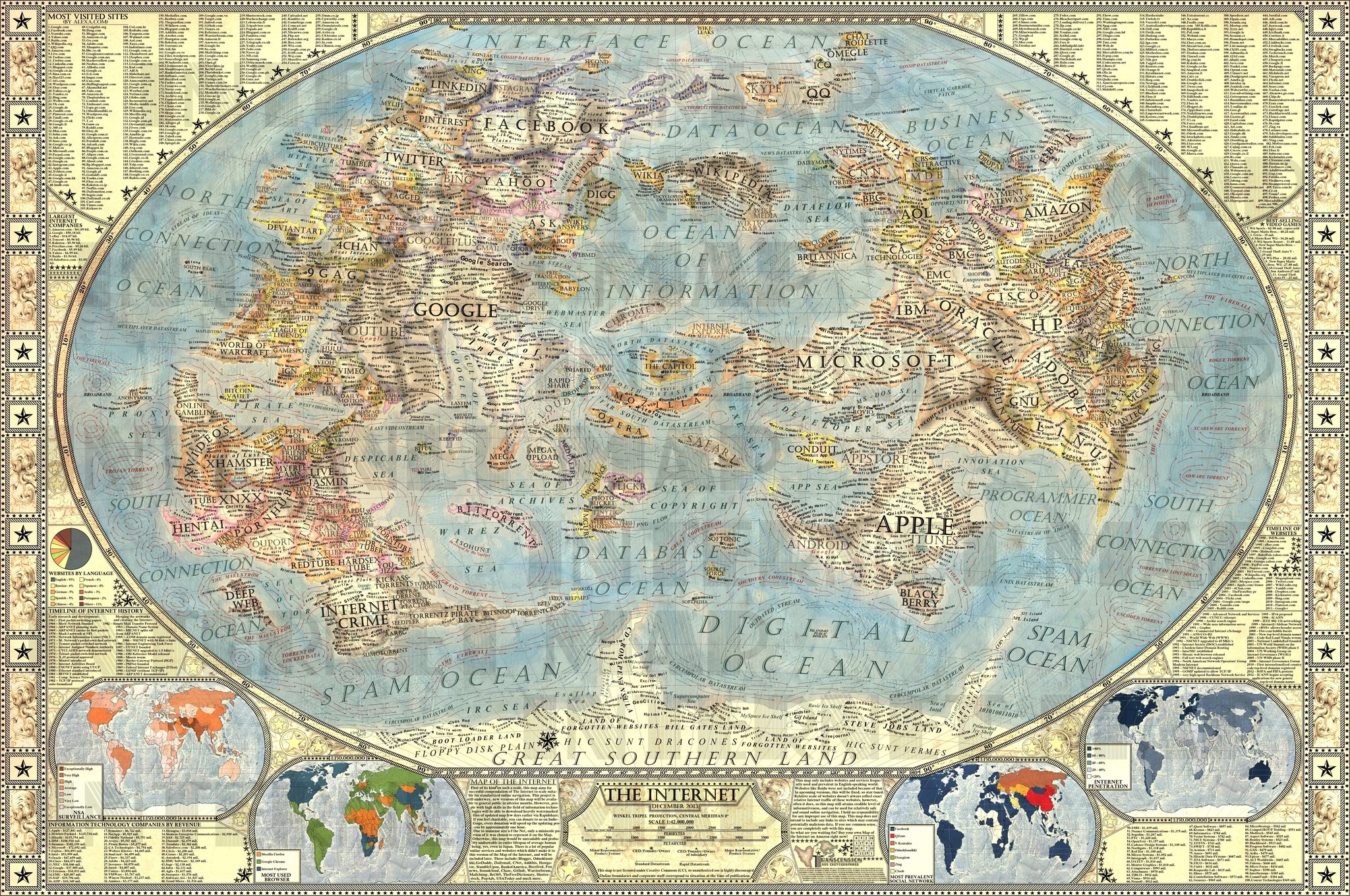The Independent's journalism is supported by our readers. When you purchase through links on our site, we may earn commission.
Map of the Internet 1.0: Explore this beautiful, hand-drawn map of the online world
Slovakian designer Martin Vargic has mapped out the major sites of the web - click the image above or the gallery below for more detail

How do you map something like the internet? It’s a challenge that continues to fascinate many virtual-cartographers, and amateur graphic designer Martin Vargic is the latest to try his hand - creating the magnificently baroque image above.
Vargic began the project in December 2013, using old National Geographic maps for visual inspiration and Alexa data of the most visited websites in the world to scale the different land masses. Perhaps the amazing fact is that the map was drawn free hand, directly into Photoshop.
"My map is divided into two distinct parts,” Vargic explained to The Independent. “The eastern continent, the Old World, showcases software companies, gaming companies and some of the more real-life oriented websites."
"The western part, the New World, is composed from two major continents; the northern one showcasing social networks, search websites, video websites, blogs, forums and art websites. All major adult-oriented websites, in addition to various warez and torrent sites, are located on the south-western continent."
Vargic says he was inspired by an earlier map of the internet created by Randal Munroe, the programmer behind the well-known xkcd web-comic. Comparing Munroe and Vargic’s images highlights the difficulty with mapping something as complex as the web.
While Vargic begun his map in terms of traffic, platforms and services, Munroe’s approach uses online communities as the main constituent. Both individuals have made the point that it isn’t the physical world that defines the web – but something less tangible, be it people or software.
You can map the internet using its infrastructure as a starting point (one anonymous hacker did just this in 2013, compromising more than 420,000 computers to achieve the feat), but although maps of pure data are beautiful, they sometimes seem to be more about spectacle, than communication.
Any map of the internet will be as much a work of fiction as it is a ‘real’ representation of the web, but Vargic’s has the advantage of being both informative and engaging. He also says he'll be updating it in the future with more languages and those looking to support the project can buy a copy of the map for themselves.
In this way Vargic's map and others like it are similar to the rough charts of terra incognita made by early explorers: they're works in progress as well as a draw for the imagination, and the more we find about the territory under scrutiny, the more maps we'll make.
Join our commenting forum
Join thought-provoking conversations, follow other Independent readers and see their replies
Comments